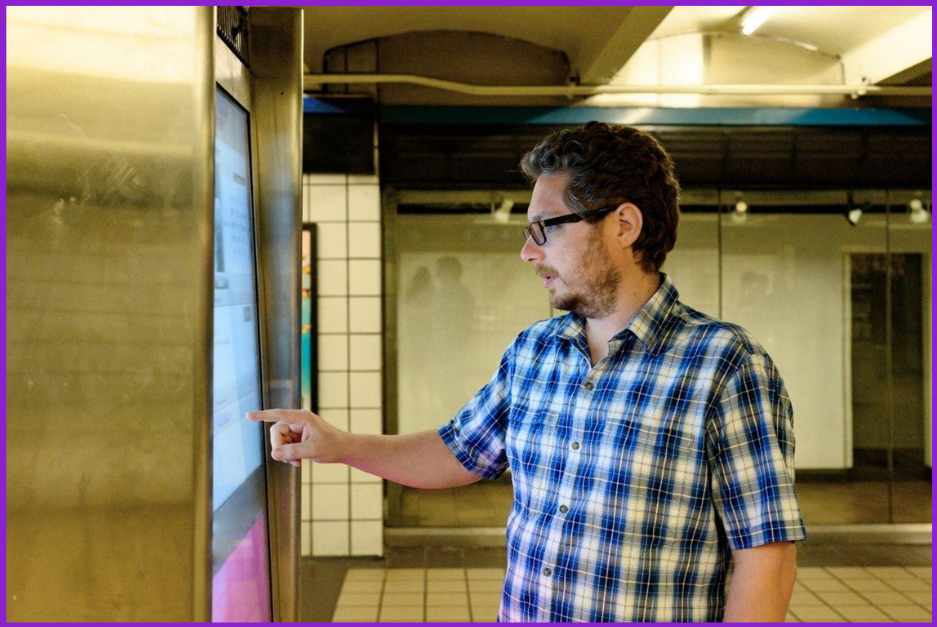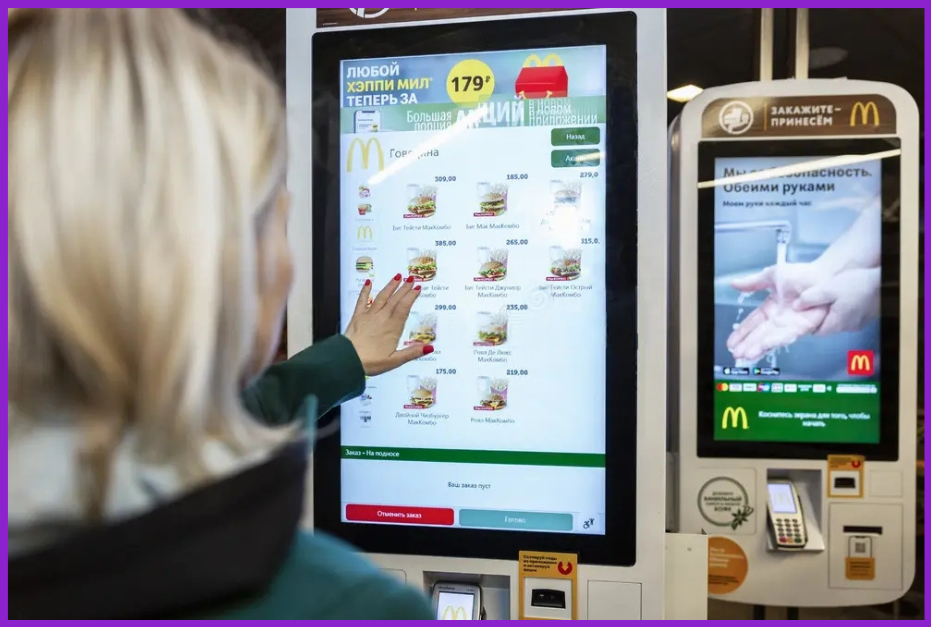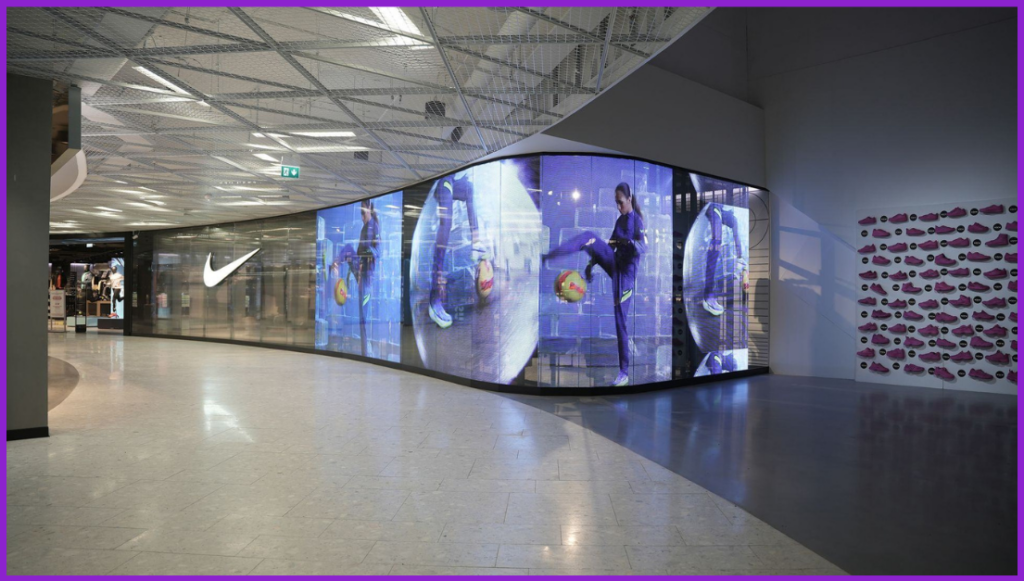
In today’s fast-paced business world, visibility defines success.
First impressions shape brand identity, and the right signage can make or break engagement.
While traditional signage has appeal, freestanding digital signage transforms communication with real-time updates, flexibility, and interactivity.
As we are in an era of digital transformation, your business face a choice: cling to the traditional way or embrace the digital revolution.
Those who adapt will captivate audiences, elevate branding, and stay ahead of the competition.
The question is: Is your business ready to make the smart move?
What Is Traditional Signage?
Traditional signage consists of static visual displays crafted from durable materials such as vinyl, wood, metal, or acrylic.
These include billboards, banners, posters, and storefront signs, commonly used for advertising and brand visibility.

These signs withstand environmental conditions and remain fixed until replaced or updated.
Businesses use them for long-term promotional messages, directional guidance, and storefront branding.
Their effectiveness largely depends on strategic placement and visual appeal, making design and readability key factors for success.
What Is Digital Signage?
Digital signage employs electronic screens, such as LED displays, LCD panels, and projection systems, to present dynamic visual content.
It enables businesses to showcase videos, animated graphics, live data, and real-time updates, making it a highly adaptable marketing tool.

Unlike static signage, digital displays allow for frequent content changes, offering businesses the flexibility to update promotions, schedules, and advertisements effortlessly.
With interactive features and remote content management, digital signage enhances engagement and customer experience, making it ideal for businesses seeking modern, high-impact communication strategies.
Key Differences Between Digital and Traditional Signage
| Aspect | Traditional Signage | Digital Signage |
|---|---|---|
| Content Flexibility and Updates | Requires manual replacement or modification, leading to additional costs and delays. Limited ability to update frequently. | Instant updates via cloud-based systems. Enables real-time modifications to promotions, schedules, and ads. |
| Cost Considerations | Lower initial cost but high recurring expenses due to reprinting, redesigning, and maintenance. Less cost-effective long-term. | Higher upfront investment but long-term savings. Eliminates reprinting costs, ensuring better cost efficiency. |
| Engagement and Interactivity | Static and one-directional. Lacks interactive elements, making it less suited for immersive experiences. | Interactive features like touchscreens, motion sensors, and AI personalization create dynamic and engaging experiences. |
| Sustainability and Environmental Impact | Frequent replacements generate waste (plastic, vinyl, paper). High resource consumption increases the carbon footprint. | Reduces material waste by eliminating reprinting. Energy-efficient LED screens support sustainability. |
| Visibility and Attention-Grabbing Ability | Relies on strategic placement and bold design. Static nature makes it less noticeable in high-traffic areas. | High-definition visuals, motion graphics, and rotating content naturally command attention and enhance engagement. |
Advantages Your Business Can Gain From Using Digital Signage
1. Instant Updates with Real-Time Control
Businesses can update content instantly without physically modifying signage.
Whether adjusting promotions, modifying schedules, or issuing emergency announcements, digital signage offers unmatched flexibility, ensuring businesses stay responsive to customer needs.
2. Enhanced Customer Engagement & Brand Recall
Motion graphics, animated visuals, and interactive features create a more immersive experience than static signs.

This dynamic content captures customer attention more effectively, leading to improved engagement, higher retention, and stronger brand recall.
3. Remote Management for Multiple Locations
Digital signage networks allow businesses to manage content from a centralized system across different locations.
This feature ensures brand consistency, streamlined marketing efforts, and operational efficiency, eliminating the need for manual updates at individual sites.
4. Long-Term Cost Efficiency & Reduced Printing Expenses
While the upfront cost of digital signage is higher, it eliminates recurring expenses associated with reprinting, redesigning, and replacing traditional signage.
Over time, businesses save significantly by updating content digitally rather than producing new physical materials.
5. Additional Revenue Streams Through Advertising
Businesses can maximize their investment by selling advertising space on digital displays.

High-traffic locations provide lucrative opportunities for third-party advertisers, creating an additional revenue source while increasing audience engagement.
Challenges You Need to be Aware Of When Using Digital Signages
1. High Initial Investment Costs
Digital signage requires a significant upfront investment in screens, media players, and software licensing.
This cost barrier may make adoption more challenging for small/medium businesses or those with tight budgets.
2. Ongoing Maintenance & Technical Support Needs
Unlike static signage, digital displays require regular software updates, troubleshooting, and occasional hardware repairs.
Businesses must allocate resources for IT support to ensure seamless performance and prevent disruptions.
3. Continuous Power Consumption & Energy Costs
Digital screens require electricity to function, increasing operational costs.
While energy-efficient LED technology helps reduce consumption, businesses must factor in long-term energy expenses, especially for 24/7 displays.
Real-World Success: How Businesses Leveraged Digital Signage
McDonald’s – Enhancing Customer Engagement with AI-Powered Digital Signage
McDonald’s transitioned from traditional signage to AI-powered digital menu boards to improve customer experience and operational efficiency.

This transformation included:
- Dynamic Digital Menus – Instantly update pricing, promotions, and menu items.
- AI-Driven Personalization – Drive-thru screens recommend items based on customer preferences and weather conditions.
- Order Status Displays – Reduce wait times and enhance order accuracy.
Impact & Results
- 35% Increase in Upselling – AI-driven recommendations boosted sales.
- 40% Faster Service – Real-time updates reduced customer decision time.
- Cost Savings – Eliminated recurring menu reprint costs, saving millions.
- Enhanced Customer Experience – Personalized content improved engagement.
Key Takeaway
McDonald’s success highlights how digital signage can boost sales, streamline operations, and improve customer satisfaction.
Businesses across industries can leverage real-time updates and personalization to stay ahead in a competitive market.
Nike – Enhancing Retail Experience with Interactive Digital Displays
Nike has implemented interactive digital displays in its retail stores to create immersive shopping experiences and maintain a consistent brand message globally.

Traditional posters and banners couldn’t adapt quickly to new product launches and marketing campaigns.
Solution Implemented:
- Interactive In-Store Digital Signage: Customers can browse products, view specifications, and customize shoe designs through interactive kiosks.
- Video Walls with High-Energy Sports Content: Large video displays play dynamic sports content, reinforcing Nike’s brand identity.
- Integration of QR Codes and NFC Technology: Signage equipped with QR codes and NFC allows customers to instantly order out-of-stock items for home delivery.
Impact:
- Increased Customer Engagement: Interactive kiosks have encouraged more in-store interactions and longer dwell times.
- Higher Conversion Rates: Real-time promotions and product recommendations have led to more impulse purchases.
- Stronger Brand Loyalty: The combination of tech-driven shopping and personalized content has reinforced Nike’s innovation-focused brand identity.
Key Takeaway:
Nike’s adoption of digital signage demonstrates how retail brands can merge technology with customer experience to drive engagement, improve sales, and create an interactive shopping journey.
Which Type of Businesses That Can Benefit From Digital Signages?
1. Retail Stores
Digital signage enhances the shopping experience by displaying promotions, product recommendations, and interactive catalogs.
High-definition screens capture attention, increasing customer engagement and driving impulse purchases.
2. Restaurants and Cafés
Electronic menu boards allow real-time updates, enabling restaurants to modify prices, add new dishes, and promote daily specials without reprinting costs.
Animated visuals and videos attract customers and improve ordering efficiency.
3. Corporate Offices
Digital displays streamline internal communications by sharing company news, employee recognition, and performance metrics.
Meeting room scheduling systems and digital directories enhance workplace productivity and organization.
4. Healthcare Facilities
Hospitals and clinics use digital signage for wayfinding, reducing patient confusion and improving navigation.
Real-time appointment updates and health awareness messages enhance patient experience and streamline administrative communication.
5. Transportation Hubs
Airports, train stations, and bus terminals rely on digital signage for real-time arrival and departure updates.
Dynamic advertisements and interactive wayfinding systems improve traveler convenience and commercial opportunities for businesses.
Which Businesses Should Stick to Traditional Signage?
Traditional signage remains a viable option for businesses that prioritize cost-effectiveness, brand heritage, or short-term promotional needs.
Local shops and small businesses benefit from its affordability, using banners and storefront signs to attract foot traffic without ongoing expenses.

Luxury and historic brands prefer traditional signage to maintain exclusivity and authenticity, with engraved plaques and handcrafted boards enhancing their premium appeal.
Additionally, temporary events like concerts and pop-up markets rely on printed materials for effective yet budget-friendly advertising, avoiding the high costs of digital alternatives.
Make an Informed Decision
Your signage strategy is more than just a display – it reflects your brand’s vision.
Consider your goals, audience, and long-term objectives when selecting signage solutions.
Today’s right investment can elevate your brand, enhance customer experiences, and drive measurable growth in this year and beyond.
